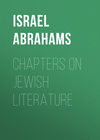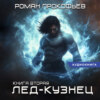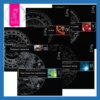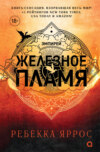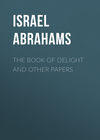Читать книгу: «Chapters on Jewish Literature», страница 2
CHAPTER III
THE TALMUD
I (220-280) Palestine—Jochanan, Simon, Joshua, Simlai; Babylonia—Rab and Samuel.
II (280-320) Palestine—Ami, Assi, Abbahu, Chiya; Babylonia—Huna and Zeira.
III (320-380) Babylonia—Rabba, Abayi, Rava.
IV (380-430) Babylonia—Ashi (first compilation of the Babylonian Talmud).
V and VI (430-500) Babylonia—Rabina (completion of the Babylonian Talmud).
The Talmud, or Gemara ("Doctrine," or "Completion"), was a natural development of the Mishnah. The Talmud contains, indeed, many elements as old as the Mishnah, some even older. But, considered as a whole, the Talmud is a commentary on the work of the Tannaim. It is written, not in Hebrew, as the Mishnah is, but in a popular Aramaic. There are two distinct works to which the title Talmud is applied; the one is the Jerusalem Talmud (completed about the year 370 C.E.), the other the Babylonian (completed a century later). At first, as we have seen, the Rabbinical schools were founded on Jewish soil. But Palestine did not continue to offer a friendly welcome. Under the more tolerant rulers of Babylonia or Persia, Jewish learning found a refuge from the harshness experienced under those of the Holy Land. The Babylonian Jewish schools in Nehardea, Sura, and Pumbeditha rapidly surpassed the Palestinian in reputation, and in the year 350 C.E., owing to natural decay, the Palestinian schools closed.
The Talmud is accordingly not one work, but two, the one the literary product of the Palestinian, the other, of the Babylonian Amoraim. The latter is the larger, the more studied, the better preserved, and to it attention will here be mainly confined. The Talmud is not a book, it is a literature. It contains a legal code, a system of ethics, a body of ritual customs, poetical passages, prayers, histories, facts of science and medicine, and fancies of folk-lore.
The Amoraim were what their name implies, "Expounders," or "Discoursers"; but their expositions were often original contributions to literature. Their work extends over the long interval between 200 and 500 C.E. The Amoraim naturally were men of various character and condition. Some were possessed of much material wealth, others were excessively poor. But few of them were professional men of letters. Like the Tannaim, the Amoraim were often artisans, field-laborers, or physicians, whose heart was certainly in literature, but whose hand was turned to the practical affairs of life. The men who stood highest socially, the Princes of the Captivity in Babylonia and the Patriarchs in Palestine, were not always those vested with the highest authority. Some of the Amoraim, again, were merely receptive, the medium through which tradition was handed on; others were creative as well. To put the same fact in Rabbinical metaphor, some were Sinais of learning, others tore up mountains, and ground them together in keen and critical dialectics.
The oldest of the Amoraim, Chanina, the son of Chama, of Sepphoris (180-260), was such a firm mountain of ancient learning. On the other hand, Jochanan, the son of Napacha (199-279), of dazzling physical beauty, had a more original mind. His personal charms conveyed to him perhaps a sense of the artistic; to him the Greek language was a delight, "an ornament of women." Simon, the son of Lakish (200-275), hardy of muscle and of intellect, started life as a professional athlete. A later Rabbi, Zeira, was equally noted for his feeble, unprepossessing figure and his nimble, ingenious mind. Another contemporary of Jochanan, Joshua, the son of Levi, is the hero of many legends. He was so tender to the poor that he declared his conviction that the Messiah would arise among the beggars and cripples of Rome. Simlai, who was born in Palestine, and migrated to Nehardea in Babylonia, was more of a poet than a lawyer. His love was for the ethical and poetic elements of the Talmud, the Hagadah, as this aspect of the Rabbinical literature was called in contradistinction to the Halachah, or legal elements. Simlai entered into frequent discussions with the Christian Fathers on subjects of Biblical exegesis.
The centre of interest now changes to Babylonia. Here, in the year 219, Abba Areka, or Rab (175-247), founded the Sura academy, which continued to flourish for nearly eight centuries. He and his great contemporary Samuel (180-257) enjoy with Jochanan the honor of supplying the leading materials of which the Talmud consists. Samuel laid down a rule which, based on an utterance of the prophet Jeremiah, enabled Jews to live and serve in non-Jewish countries. "The law of the land is law," said Samuel. But he lived in the realms of the stars as well as in the streets of his city. Samuel was an astronomer, and he is reported to have boasted with truth, that "he was as familiar with the paths of the stars as with the streets of Nehardea." He arranged the Jewish Calendar, his work in this direction being perfected by Hillel II in the fourth century. Like Simlai, Rab and Samuel had heathen and Christian friends. Origen and Jerome read the Scriptures under the guidance of Jews. The heathen philosopher Porphyry wrote a commentary on the Book of Daniel. So, too, Abbahu, who lived in Palestine a little later on, frequented the society of cultivated Romans, and had his family taught Greek. Abbahu was a manufacturer of veils for women's wear, for, like many Amoraim, he scorned to make learning a means of living, Abbahu's modesty with regard to his own merits shows that a Rabbi was not necessarily arrogant in pride of knowledge! Once Abbahu's lecture was besieged by a great crowd, but the audience of his colleague Chiya was scanty. "Thy teaching," said Abbahu to Chiya, "is a rare jewel, of which only an expert can judge; mine is tinsel, which attracts every ignorant eye."
It was Rab, however, who was the real popularizer of Jewish learning. He arranged courses of lectures for the people as well as for scholars. Rab's successor as head of the Sura school, Huna (212-297), completed Rab's work in making Babylonia the chief centre of Jewish learning. Huna tilled his own fields for a living, and might often be met going home with his spade over his shoulder. It was men like this who built up the Jewish tradition. Huna's predecessor, however, had wider experience of life, for Rab had been a student in Palestine, and was in touch with the Jews of many parts. From Rab's time onwards, learning became the property of the whole people, and the Talmud, besides being the literature of the Jewish universities, may be called the book of the masses. It contains, not only the legal and ethical results of the investigations of the learned, but also the wisdom and superstition of the masses. The Talmud is not exactly a national literature, but it was a unique bond between the scattered Jews, an unparallelled spiritual and literary instrument for maintaining the identity of Judaism amid the many tribulations to which the Jews were subjected.
The Talmud owed much to many minds. Externally it was influenced by the nations with which the Jews came into contact. From the inside, the influences at work were equally various. Jochanan, Rab, and Samuel in the third century prepared the material out of which the Talmud was finally built. The actual building was done by scholars in the fourth century. Rabba, the son of Nachmani (270-330), Abayi (280-338), and Rava (299-352) gave the finishing touches to the method of the Talmud. Rabba was a man of the people; he was a clear thinker, and loved to attract all comers by an apt anecdote. Rava had a superior sense of his own dignity, and rather neglected the needs of the ordinary man of his day. Abayi was more of the type of the average Rabbi, acute, genial, self-denying. Under the impulse of men of the most various gifts of mind and heart, the Talmud was gradually constructed, but two names are prominently associated with its actual compilation. These were Ashi (352-427) and Rabina (died 499). Ashi combined massive learning with keen logical ingenuity. He needed both for the task to which he devoted half a century of his life. He possessed a vast memory, in which the accumulated tradition of six centuries was stored, and he was gifted with the mental orderliness which empowered him to deal with this bewildering mass of materials.
It is hardly possible that after the compilation of the Talmud it remained an oral book, though it must be remembered that memory played a much greater part in earlier centuries than it does now. At all events, Ashi, and after him Rabina, performed the great work of systematizing the Rabbinical literature at a turning-point in the world's history. The Mishnah had been begun at a moment when the Roman empire was at its greatest vigor and glory; the Talmud was completed at the time when the Roman empire was in its decay. That the Jews were saved from similar disintegration, was due very largely to the Talmud. The Talmud is thus one of the great books of the world. Despite its faults, its excessive casuistry, its lack of style and form, its stupendous mass of detailed laws and restrictions, it is nevertheless a great book in and for itself. It is impossible to consider it further here in its religious aspects. But something must be said in the next chapter of that side of the Rabbinical literature known as the Midrash.
BIBLIOGRAPHY
The Talmud.
Essays by E. Deutsch and A. Darmesteter (Jewish Publication Society of America).
Graetz.—II, 18-22 (character of the Talmud, end of ch. 22).
Karpeles.—Jewish Literature and other Essays, p. 52.
Steinschneider.—Jewish Literature, p. 20.
Schiller-Szinessy.—Encycl. Brit., Vol. XXIII, p. 35.
M. Mielziner.—Introduction to the Talmud (Cincinnati, 1894).
S. Schechter.—Some Aspects of Rabbinic Theology, J.Q.R., VI, p. 405, etc.
–– Studies in Judaism (Jewish Publication Society of America, 1896), pp. 155, 182, 213, 233 [189, 222, 259, 283].
B. Spiers.—School System of the Talmud (London, 1898) (with appendix on Baba Kama); the Threefold Cord (1893) on Sanhedrin, Baba Metsia, and Baba Bathra.
M. Jastrow.—History and Future of the Text of the Talmud (Publications of the Gratz College, Philadelphia, 1897, Vol. I).
P.B. Benny.—Criminal Code of the Jews according to the Talmud (London, 1880).
S. Mendelsohn.—The Criminal Jurisprudence of the Ancient Hebrews (Baltimore, 1891).
D. Castelli.—Future Life in Rabbinical Literature, J.Q.R., I, p. 314.
M. Güdemann.—Spirit and Letter in Judaism and Christianity, ibid., IV, p. 345.
I. Harris.—Rise and Development of the Massorah, ibid., I, pp. 128, etc.
H. Polano.—The Talmud (Philadelphia, 1876).
I. Myers.—Gems from the Talmud (London, 1894).
D.W. Amram.—The Jewish Law of Divorce according to Bible and Talmud (Philadelphia, 1896).
CHAPTER IV
THE MIDRASH AND ITS POETRY
Mechilta, Sifra, Sifre, Pesikta, Tanchuma, Midrash Rabbah, Yalkut.—Proverbs.—Parables.—Fables.
In its earliest forms identical with the Halachah, or the practical and legal aspects of the Mishnah and the Talmud, the Midrash, in its fuller development, became an independent branch of Rabbinical literature. Like the Talmud, the Midrash is of a composite nature, and under the one name the accumulations of ages are included. Some of its contents are earlier than the completion of the Bible, others were collected and even created as recently as the tenth or the eleventh century of the current era.
Midrash ("Study," "Inquiry") was in the first instance an Explanation of the Scriptures. This explanation is often the clear, natural exposition of the text, and it enforces rules of conduct both ethical and ritual. The historical and moral traditions which clustered round the incidents and characters of the Bible soon received a more vivid setting. The poetical sense of the Rabbis expressed itself in a vast and beautiful array of legendary additions to the Bible, but the additions are always devised with a moral purpose, to give point to a preacher's homily or to inspire the imagination of the audience with nobler fancies. Besides being expository, the Midrash is, therefore, didactic and poetical, the moral being conveyed in the guise of a narrative, amplifying and developing the contents of Scripture. The Midrash gives the results of that deep searching of the Scriptures which became second nature with the Jews, and it also represents the changes and expansions of ethical and theological ideals as applied to a changing and growing life.
From another point of view, also, the Midrash is a poetical literature. Its function as a species of popular homiletics made it necessary to appeal to the emotions. In its warm and living application of abstract truths to daily ends, in its responsive and hopeful intensification of the nearness of God to Israel, in its idealization of the past and future of the Jews, it employed the poet's art in essence, though not in form. It will be seen later on that in another sense the Midrash is a poetical literature, using the lore of the folk, the parable, the proverb, the allegory, and the fable, and often using them in the language of poetry.
The oldest Midrash is the actual report of sermons and addresses of the Tannaite age; the latest is a medieval compilation from all extant sources. The works to which the name Midrash is applied are the Mechilta (to Exodus); the Sifra (to Leviticus); the Sifre (to Numbers and Deuteronomy); the Pesikta (to various Sections of the Bible, whence its name); the Tanchuma (to the Pentateuch); the Midrash Rabbah (the "Great Midrash," to the Pentateuch and the Five Scrolls of Esther, Ruth, Lamentations, Ecclesiastes, and the Song of Songs); and the Midrash Haggadol (identical in name, and in contents similar to, but not identical with, the Midrash Rabbah); together with a large number of collected Midrashim, such as the Yalkut, and a host of smaller works, several of which are no longer extant.
Regarding the Midrash in its purely literary aspects, we find its style to be far more lucid than that of the Talmud, though portions of the Halachic Midrash are identical in character with the Talmud. The Midrash has many passages in which the simple graces of form match the beauty of idea. But for the most part the style is simple and prosaic, rather than ornate or poetical. It produces its effects by the most straightforward means, and strikes a modern reader as lacking distinction in form. The dead level of commonplace expression is, however, brightened by brilliant passages of frequent occurrence. Prayers, proverbs, parables, and fables, dot the pages of Talmud and Midrash alike. The ancient proverbs of the Jews were more than mere chips from the block of experience. They were poems, by reason of their use of metaphor, alliteration, assonance, and imagination. The Rabbinical proverbs show all these poetical qualities.
He who steals from a thief smells of theft.—Charity is the salt of Wealth.—Silence is a fence about Wisdom.—Many old camels carry the skins of their young.—Two dry sticks and one green burn together.—If the priest steals the god, on what can one take an oath?—All the dyers cannot bleach a raven's wing.—Into a well from which you have drunk, cast no stone.—Alas for the bread which the baker calls bad.—Slander is a Snake that stings in Syria, and slays in Rome.—The Dove escaped from the Eagle and found a Serpent in her nest.—Tell no secrets, for the Wall has ears.
These, like many more of the Rabbinical proverbs, are essentially poetical. Some, indeed, are either expanded metaphors or metaphors touched by genius into poetry. The alliterative proverbs and maxims of the Talmud and Midrash are less easily illustrated. Sometimes they enshrine a pun or a conceit, or depend for their aptness upon an assonance. In some of the Talmudic proverbs there is a spice of cynicism. But most of them show a genial attitude towards life.
The poetical proverb easily passes into the parable. Loved in Bible times, the parable became in after centuries the most popular form of didactic poetry among the Jews. The Bible has its parables, but the Midrash overflows with them. They are occasionally re-workings of older thoughts, but mostly they are original creations, invented for a special purpose, stories devised to drive home a moral, allegories administering in pleasant wrappings unpalatable satires or admonitions. In all ages up to the present, Jewish moralists have relied on the parable as their most effective instrument. The poetry of the Jewish parables is characteristic also of the parables imitated from the Jewish, but the latter have a distinguishing feature peculiar to them. This is their humor, the witty or humorous parable being exclusively Jewish. The parable is less spontaneous than the proverb. It is a product of moral poetry rather than of folk wisdom. Yet the parable was so like the proverb that the moral of a parable often became a new proverb. The diction of the parable is naturally more ornate. By the beauty of its expression, its frequent application of rural incidents to the life familiar in the cities, the rhythm and flow of its periods, its fertile imagination, the parable should certainly be placed high in the world's poetry. But it was poetry with a tendency, the mashal, or proverb-parable, being what the Rabbis themselves termed it, "the clear small light by which lost jewels can be found."
The following is a parable of Hillel, which is here cited more to mention that noble, gentle Sage than as a specimen of this class of literature. Hillel belongs to a period earlier than that dealt with in this book, but his loving and pure spirit breathes through the pages of the Talmud and Midrash:
Hillel, the gentle, the beloved sage,
Expounded day by day the sacred page
To his disciples in the house of learning;
And day by day, when home at eve returning,
They lingered, clustering round him, loth to part
From him whose gentle rule won every heart.
But evermore, when they were wont to plead
For longer converse, forth he went with speed,
Saying each day: "I go—the hour is late—
To tend the guest who doth my coming wait,"
Until at last they said: "The Rabbi jests,
When telling us thus daily of his guests
That wait for him." The Rabbi paused awhile,
And then made answer: "Think you I beguile
You with an idle tale? Not so, forsooth!
I have a guest whom I must tend in truth.
Is not the soul of man indeed a guest,
Who in this body deigns a while to rest,
And dwells with me all peacefully to-day:
To-morrow—may it not have fled away?"
Space must be found for one other parable, taken (like many other poetical quotations in this volume) from Mrs. Lucas' translations:
Simeon ben Migdal, at the close of day,
Upon the shores of ocean chanced to stray,
And there a man of form and mien uncouth,
Dwarfed and misshapen, met he on the way.
"Hail, Rabbi," spoke the stranger passing by,
But Simeon thus, discourteous, made reply:
"Say, are there in thy city many more,
Like unto thee, an insult to the eye?"
"Nay, that I cannot tell," the wand'rer said,
"But if thou wouldst ply the scorner's trade,
Go first and ask the Master Potter why
He has a vessel so misshapen made?"
Then (so the legend tells) the Rabbi knew
That he had sinned, and prone himself he threw
Before the other's feet, and prayed of him
Pardon for the words that now his soul did rue.
But still the other answered as before:
"Go, in the Potter's ear thy plaint outpour,
For what am I! His hand has fashioned me,
And I in humble faith that hand adore."
Brethren, do we not often too forget
Whose hand it is that many a time has set
A radiant soul in an unlovely form,
A fair white bird caged in a mouldering net?
Nay more, do not life's times and chances, sent
By the great Artificer with intent
That they should prove a blessing, oft appear
To us a burden that we sore lament?
Ah! soul, poor soul of man! what heavenly fire
Would thrill thy depths and love of God inspire,
Could'st thou but see the Master hand revealed,
Majestic move "earth's scheme of things entire."
It cannot be! Unseen he guideth us,
But yet our feeble hands, the luminous
Pure lamp of faith can light to glorify
The narrow path that he has traced for us.
Finally, there are the Beast Fables of the Talmud and the Midrash. Most of these were borrowed directly or indirectly from India. We are told in the Talmud that Rabbi Meir knew three hundred Fox Fables, and that with his death (about 290 C.E.) "fabulists ceased to be," Very few of Meir's fables are extant, so that it is impossible to gather whether or not they were original. There are only thirty fables in the Talmud and the Midrash, and of these several cannot be parallelled in other literatures. Some of the Talmudic fables are found also in the classical and the earliest Indian collections; some in the later collections; some in the classics, but not in the Indian lists; some in India, but not in the Latin and Greek authors. Among the latter is the well-known fable of the Fox and the Fishes, used so dramatically by Rabbi Akiba. The original Talmudic fables are, according to Mr. J. Jacobs, the following: Chaff, Straw, and Wheat, who dispute for which of them the seed has been sown: the winnowing fan soon decides; The Caged Bird, who is envied by his free fellow; The Wolf and the two Hounds, who have quarrelled; the wolf seizes one, the other goes to his rival's aid, fearing the same fate himself on the morrow, unless he helps the other dog to-day; The Wolf at the Well, the mouth of the well is covered with a net: "If I go down into the well," says the wolf, "I shall be caught. If I do not descend, I shall die of thirst"; The Cock and the Bat, who sit together waiting for the sunrise: "I wait for the dawn," said the cock, "for the light is my signal; but as for thee—the light is thy ruin"; and, finally, what Mr. Jacobs calls the grim beast-tale of the Fox as Singer, in which the beasts—invited by the lion to a feast, and covered by him with the skins of wild beasts—are led by the fox in a chorus: "What has happened to those above us, will happen to him above," implying that their host, too, will come to a violent death. In the context the fable is applied to Haman, whose fate, it is augured, will resemble that of the two officers whose guilt Mordecai detected.
Such fables are used in the Talmud to point religious or even political morals, very much as the parables were. The fable, however, took a lower flight than the parable, and its moral was based on expediency, rather than on the highest ethical ideals. The importance of the Talmudic fables is historical more than literary or religious. Hebrew fables supply one of the links connecting the popular literature of the East with that of the West. But they hardly belong in the true sense to Jewish literature. Parables, on the other hand, were an essential and characteristic branch of that literature.
BIBLIOGRAPHY
Midrash.
Schiller-Szinessy.—Encycl. Brit., Vol. XVI, p. 285.
Graetz.—II, p. 328 [331] seq.
Steinschneider.—Jewish Literature, pp. 5 seq., 36 seq.
L.N. Dembitz.—Jewish Services in Synagogue and Home (Jewish Publication Society of America, 1898), p. 44.
Fables.
J. Jacobs.—The Fables of Æsop (London, 1889), I, p. 110 seq.
Read also Schechter, Studies in Judaism, p. 272 [331]; and J.Q.R., (Kohler), V, p. 399; VII, p. 581; (Bacher) IV, p. 406; (Davis) VIII, p. 529; (Abrahams) I, p. 216; II, p. 172; Chenery, Legends from the Midrash (Miscellany of the Society of Hebrew Literature, Vol. II).
Покупайте книги и получайте бонусы в Литрес, Читай-городе и Буквоеде.
Участвовать в бонусной программе
